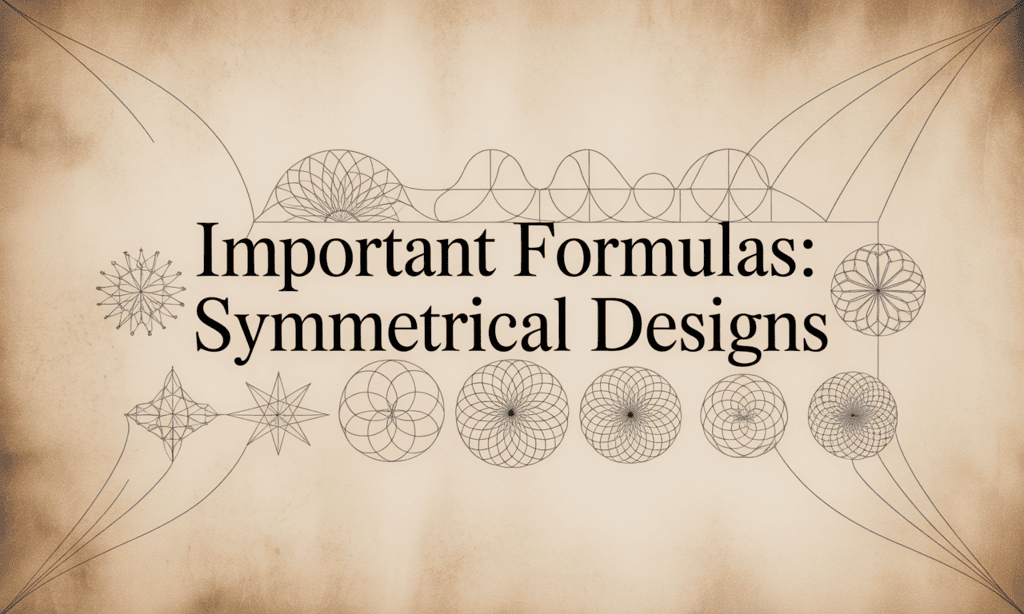Important Formulas: Symmetrical Designs | Mathematics (Maths Mela) Class 5 - New NCERT PDF Download

1. Meaning of Symmetry
Symmetry means that when a shape is divided into two parts, both halves are identical (mirror images).
Symmetry creates balance, equality, and beauty in designs (e.g., butterfly wings, rangoli, flowers).
2. Reflection Symmetry
A shape has reflection symmetry if one half is the mirror image of the other half.
Line of Symmetry → The line dividing a figure into two equal mirror-image halves.
Types of Symmetry Lines:
Vertical – Line goes up and down.
Horizontal – Line goes left to right.
Multiple lines – Some shapes (e.g., square, circle) have more than one line of symmetry.
Examples with Alphabets:
Vertical symmetry: A, T, V, X, O
Horizontal symmetry: E, O, X
Both horizontal & vertical: X, O
3. Rotational Symmetry
A shape has rotational symmetry if it looks the same after turning around its centre (without a full 360° turn).
Order of Rotational Symmetry: The number of times a shape looks the same during one full 360° rotation.
Examples:
Square → order 4 (looks the same 4 times).
Rectangle → order 2.
Circle → infinite order.
Windmill firki → order 4.
4. Shapes with Both Reflection and Rotational Symmetry
Some shapes have both kinds of symmetry.
Example: Square
4 lines of reflection symmetry.
Rotational symmetry of order 4.
5. Symmetry in Digits & Numbers
Digits with reflection symmetry: 0, 1, 8
Digits with rotational symmetry: 0, 1, 8
Digits with both: 0, 1, 8
Examples of numbers with symmetry:
Reflection symmetry: 11, 181, 8008
Rotational symmetry: 69, 818, 609
Both symmetries: 11, 101, 1881
6. Making Symmetrical Designs
To achieve ½ turn (180°) rotational symmetry: Add shapes so the design balances opposite each other.
To achieve ¼ turn (90°) rotational symmetry: Place identical shapes in four directions (top, bottom, left, right).
Reflection symmetry in designs: Add lines of symmetry (vertical, horizontal, or diagonal) if both halves are identical.
|
35 videos|318 docs|7 tests
|
FAQs on Important Formulas: Symmetrical Designs - Mathematics (Maths Mela) Class 5 - New NCERT
| 1. What is the definition of symmetry in mathematics and nature? |  |
| 2. How does reflection symmetry differ from rotational symmetry? |  |
| 3. Can you provide examples of shapes that exhibit both reflection and rotational symmetry? |  |
| 4. How is symmetry observed in numbers and digits? |  |
| 5. What are some methods for creating symmetrical designs in art or geometry? |  |





















